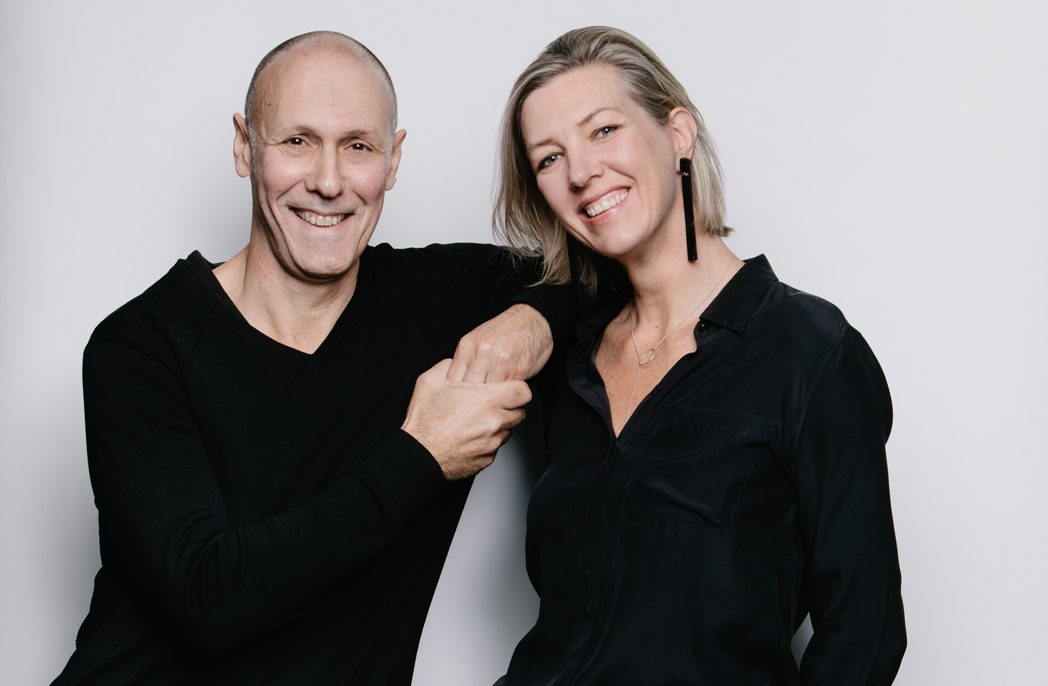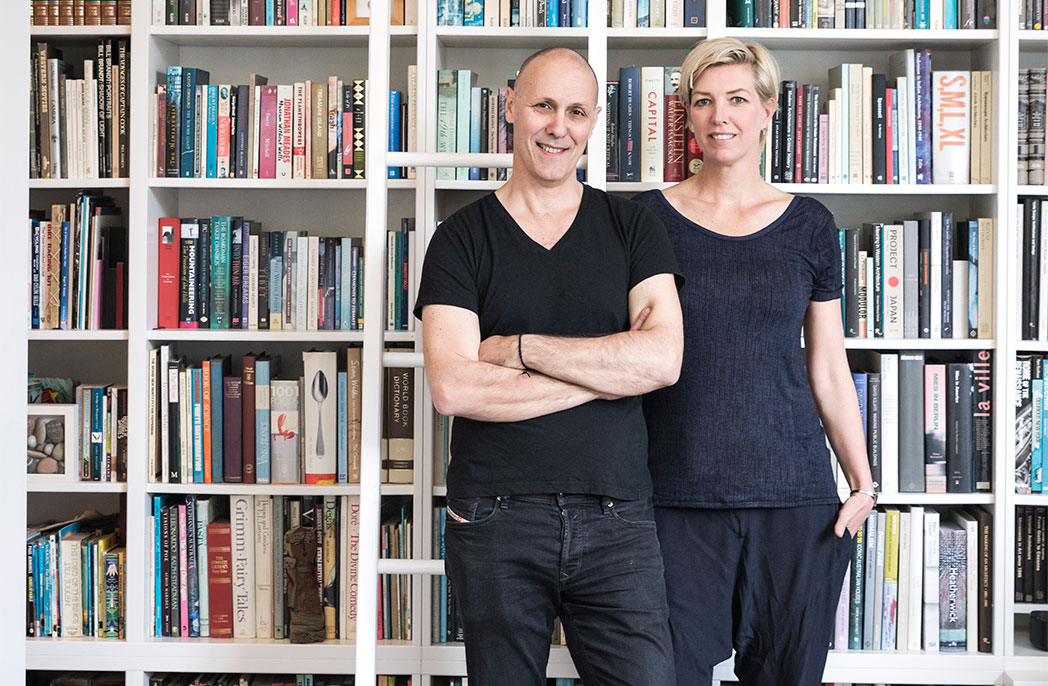
Coy Yiontis’ Humble House is “consciously contemporary”
Coy Yiontis’ Humble House is “consciously contemporary”
Share
Designed for an older couple who travel frequently, this coastal home by Coy Yiontis accommodates visiting grandchildren and family as well as being a private, easily maintained haven between adventures.
The building form was driven by site conditions and the need for accessibility; the resulting dynamic façade and dramatic internal volumes belie its liveability.
Screening from western neighbours and the need for the home to sit at a single level across a sloping site dictated the form of the building. The overbearing nature of the two-storey neighbour and threat of overshadowing and overlooking resulted in the design of a long, tall building form running the full length of the western boundary, protecting the clients’ amenity. Living spaces are oriented towards the north and cross ventilated. Bedrooms are oriented to the east to capture the morning sun.
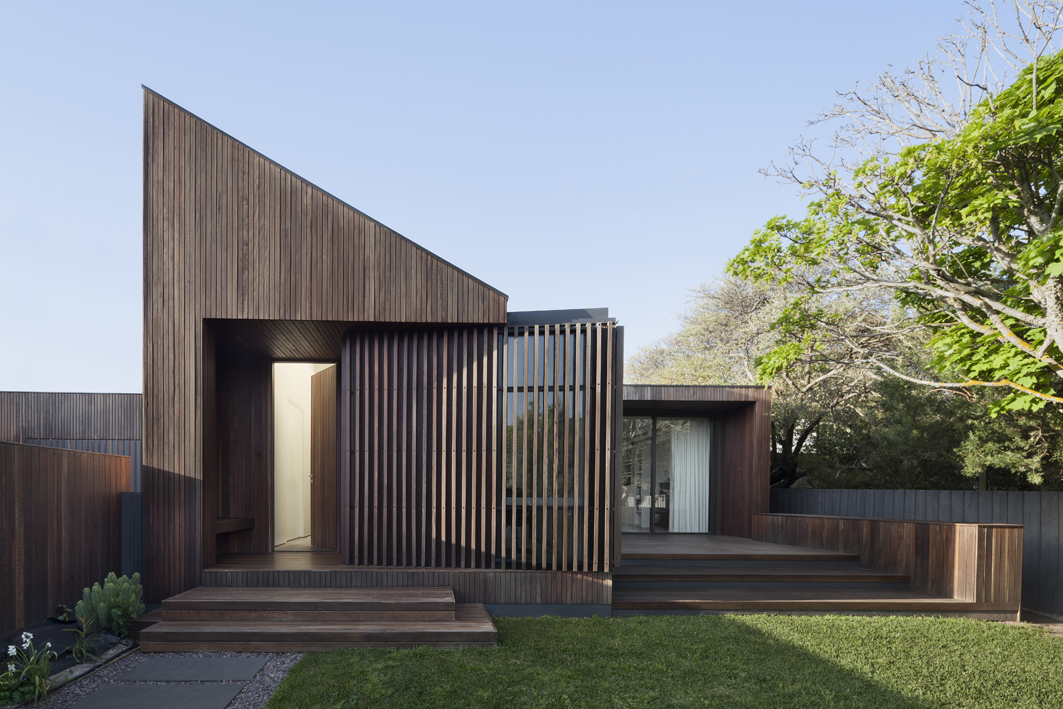
With the occupants downsizing from a grand Heritage country homestead, this new home is consciously contemporary. The clients revel in the ‘touch button technology’ throughout the home. The standard mod cons such as hydronic heating and electric blinds are relative luxuries after their old home where the stoking of daily fires was required to keep the house warm.
Also important are the small touches that aid day to day living: a bench seat at the front door for removing dirty boots, the outdoor shower for rinsing sandy feet after a beach visit and the secret hatch in the garage that accesses the internal kitchen pantry directly so that the heavy grocery bags don’t have to be lugged.
Privacy was critical and the building form responds to the threat of overshadowing and overlooking from its western neighbour. The main living space extends from this form with full-height glazing to the north and south courtyards. This can be opened out completely on either or both sides depending on weather conditions. As the clients are frequent entertainers, a flexible plan was required that allowed private studies to be converted to bedrooms when visitors stay.
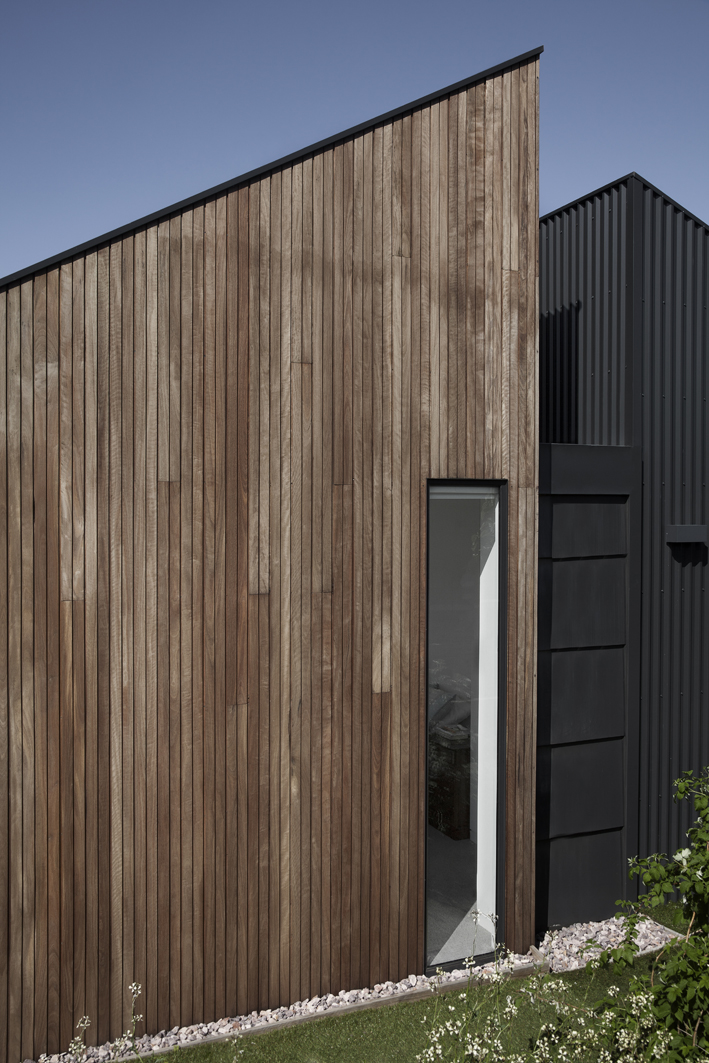
An isolated study with its own bathroom has the potential to house a live-in carer should the need arise in the future. This is a contemporary home steeped in the history of its occupants and designed around their daily lives.
Comfort, ease of maintenance and facilitation of established daily rituals were primary elements of the clients’ brief. The home is fundamentally liveable and carefully considered with regard to the idosycrancies of the couple that live here. Spaces are carefully personalised with customised niches for mementos gathered over a lifetime. Despite the contemporary response required to accommodate the functional brief, the family history is richly evident.
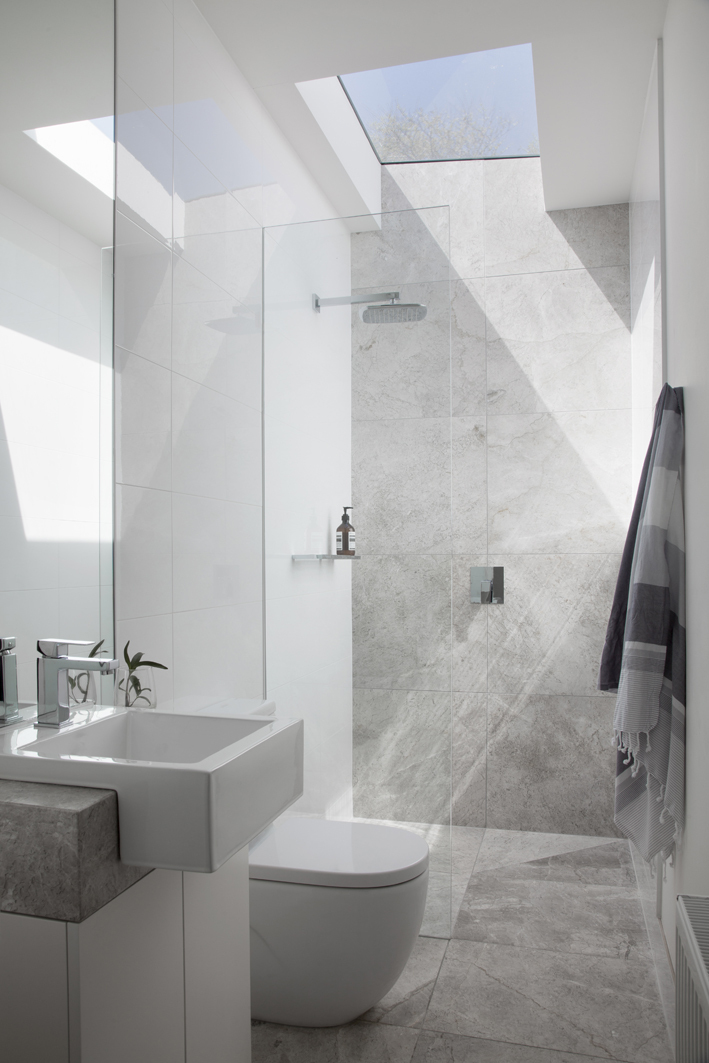
AR: How was Coy Yiontis chosen for the project?
Rosa Coy, co-director, Coy Yiontis: The client is my father: Peter Coy and his wife Jill. Coy Yiontis was an easy choice.
What were your greatest challenges with this project?
Working with family can be difficult, but Peter and Jill were dream clients from start to finish. The greatest challenge was fitting a growing brief onto a single level across the site and accommodating very specific room sizes.
How did it differ from other recent Coy Yiontis projects?
The family association and a brief that considered and accommodated ‘ageing in place’.
This home was to be that which their previous home was not: contemporary and easy to maintain. Consideration of the clients ageing comfortably in place determined that there should be no steps in the home; internal spaces and garden are at one continuous level and the resulting terraced garden at the rear of the sloping site provides ease of maintenance and an abundance of vegetables.
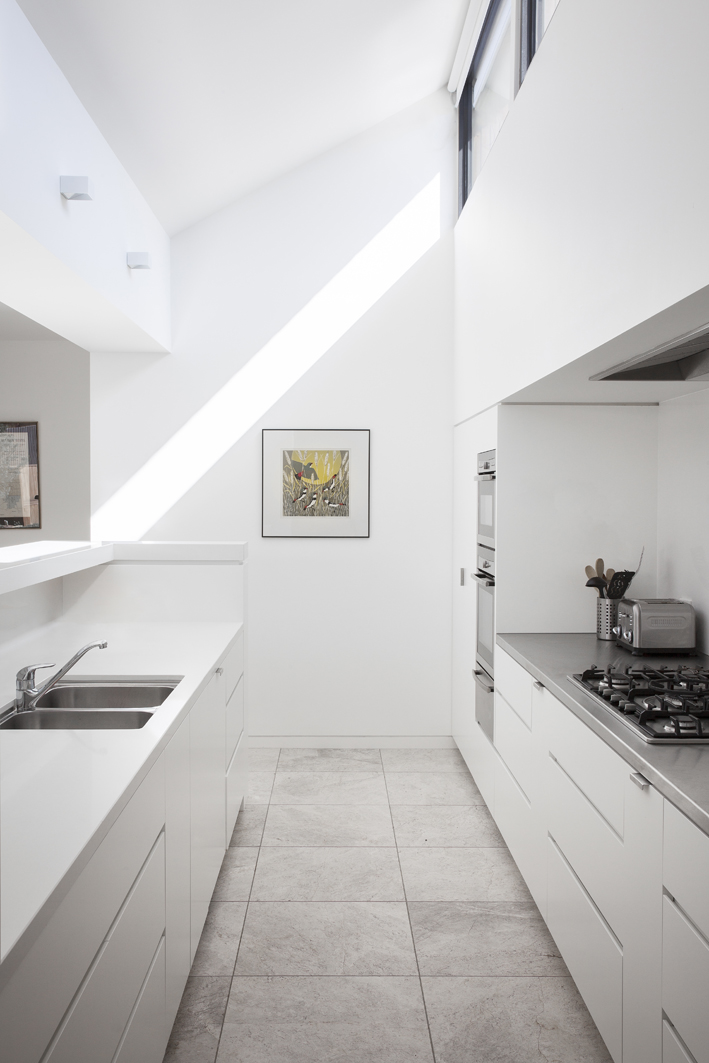
What was the timescale between commission, design and completion?
Six months design and planning, 12 months construction.
How did the project address the issue of sustainability?
The project achieves a six-star energy rating (BERS) featuring water tanks plumbed into sanitary units and double-glazing throughout. It also respects stringent local fire rating requirements. The feature spottedgum cladding and screening was used for its aesthetic and environmental qualities – being a local sustainable plantation timber.
How did you make your material choices?
The clients’ preference was a timber clad home. Spotted gum
was chosen as a local sustainable timber – for its availability and acceptability under the required fire rating. The Spandek Colorbond cladding extends from the roof down to clad back-of-house external walls. Wide oak boards and stone tiles were chosen as easy to maintain internal finishes to floors. The interior palette is light and durable.
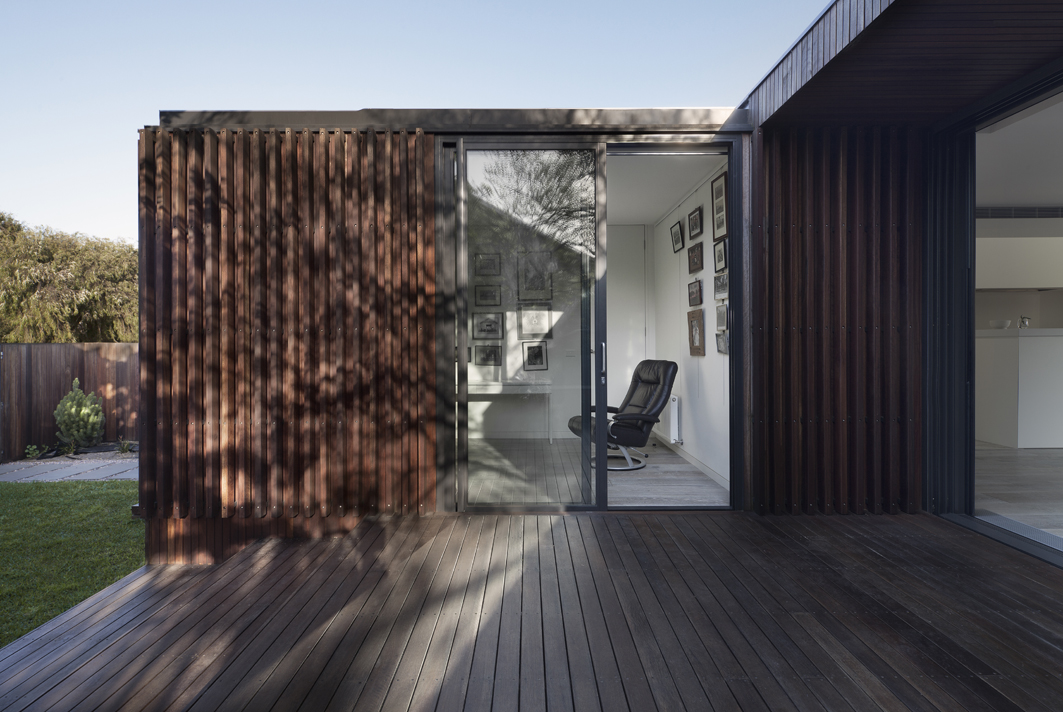
How involved were the clients during the design and build?
We were given a fairly free rein with the building form and materials. The build was a cost-plus contract and the clients were involved in decisions throughout.
Were there unexpected or confounding obstacles that arose during construction?
No.
What was your main inspiration for the design?
Screening from western neighbours and the need for the home to sit at a single level across a sloping site dictated the form of the building.
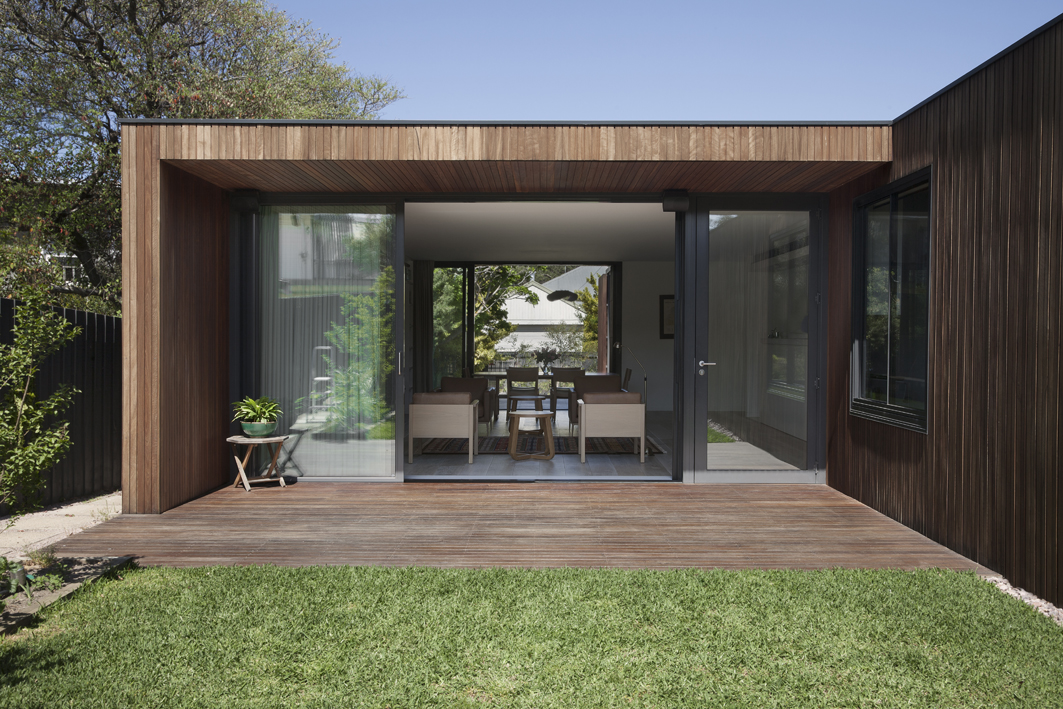
Now the project is finished, what elements do you love most and why?
The house is simple and very pure in its design. There are no excesses, no superfluous elements. We love the resulting drama of the front façade and the timber detailing.
Has there been any need to revisit the project since completion and, if so, were those issues resolved easily?
We visit the home regularly as guests, but there have been no issues that have required our involvement. We are reminded every time we speak to the client how wonderful the house is to live in and this makes us very happy.
Photography by Tatjana Plitt
This article originally appeared in AR156 – available online and digitally through Zinio.
You Might also Like
